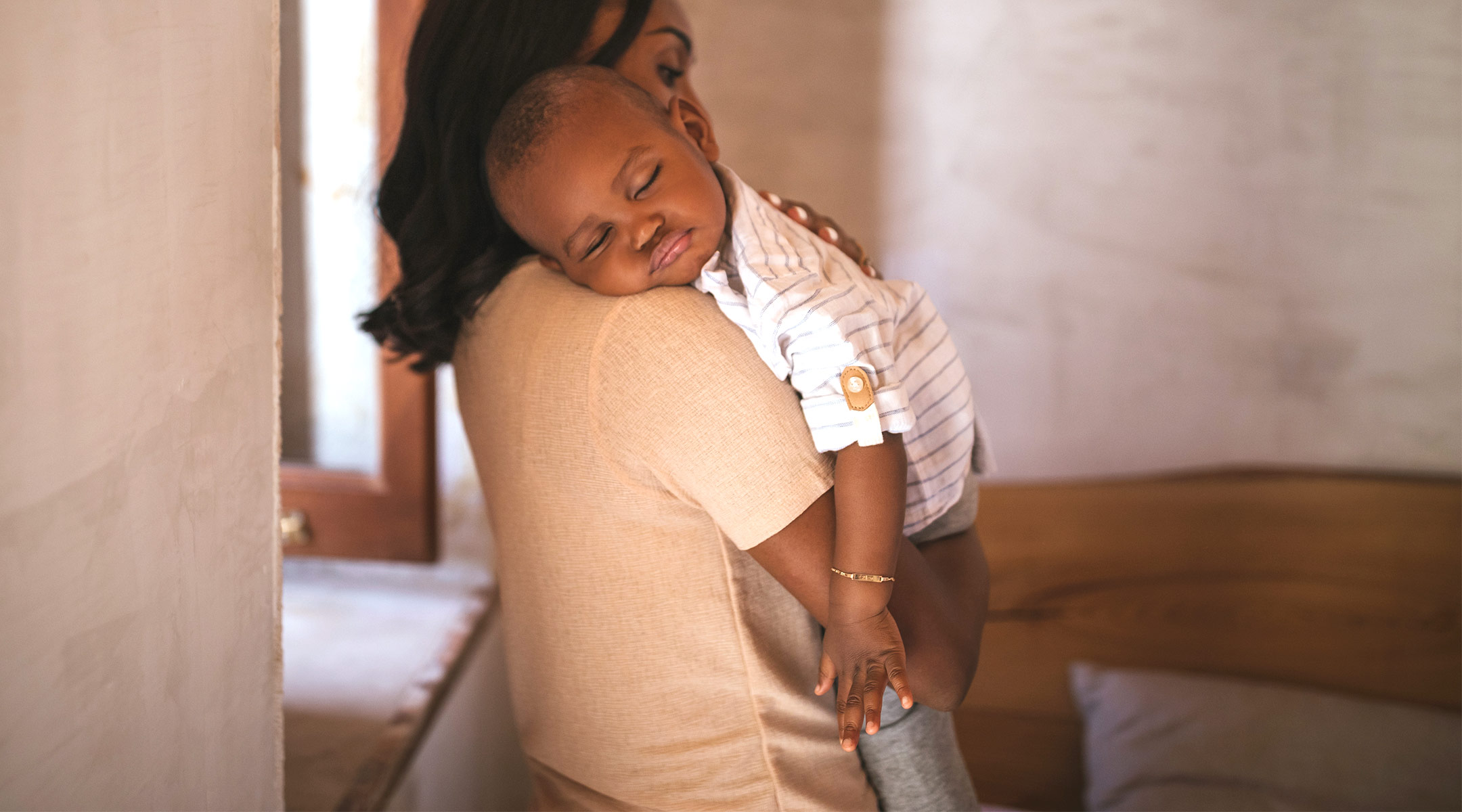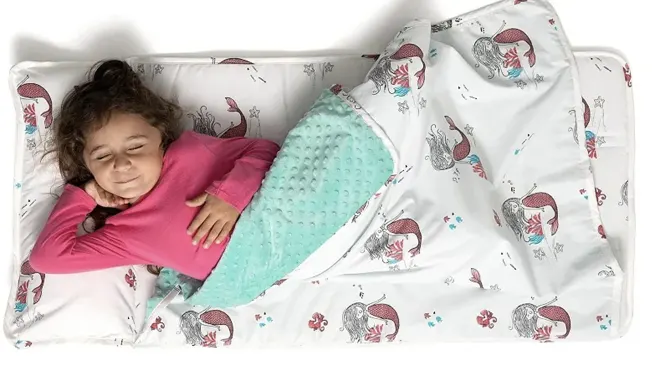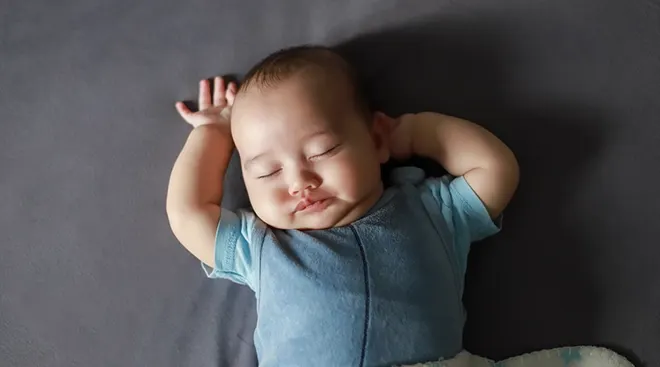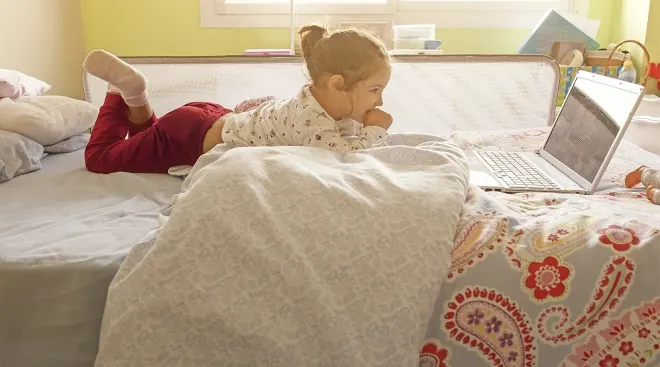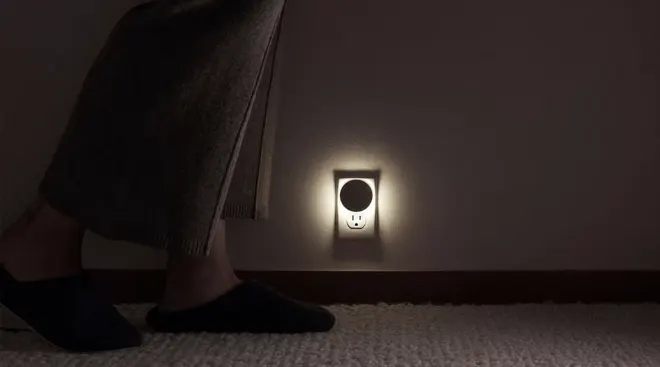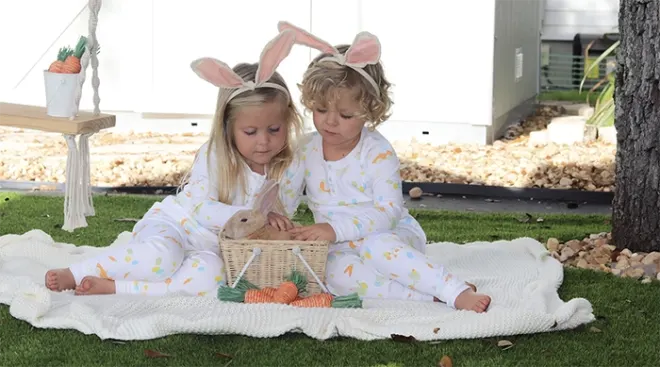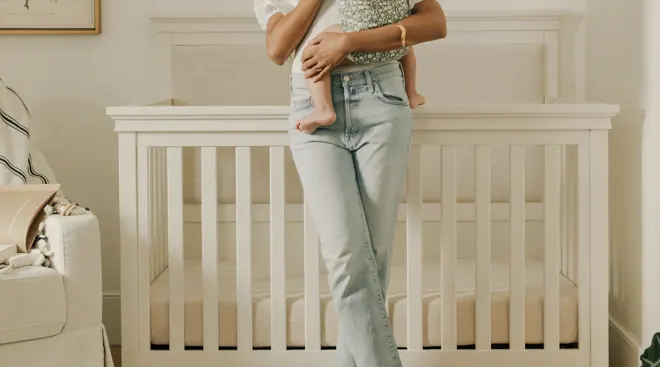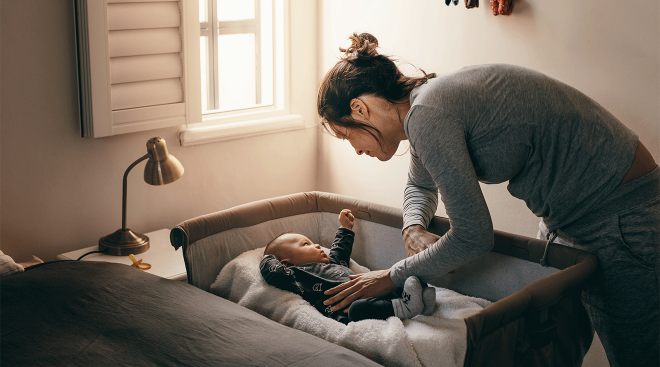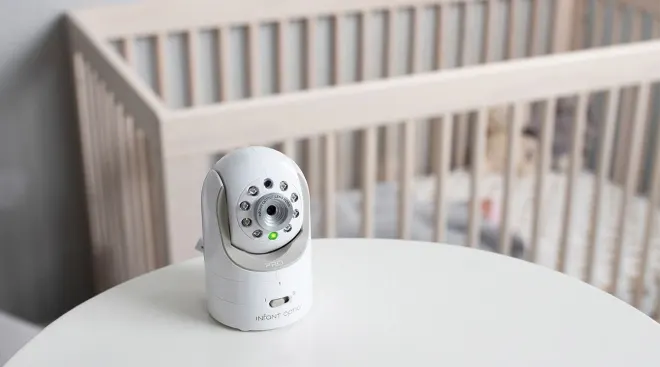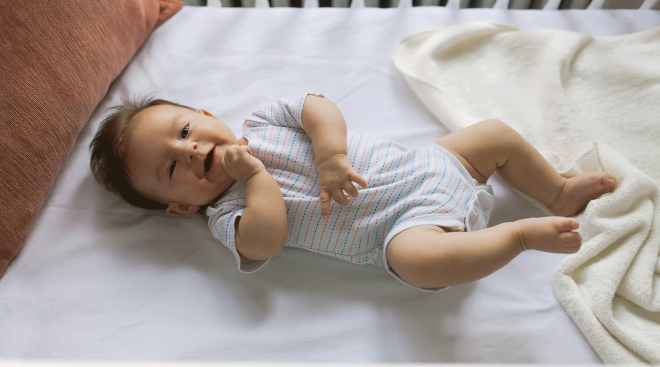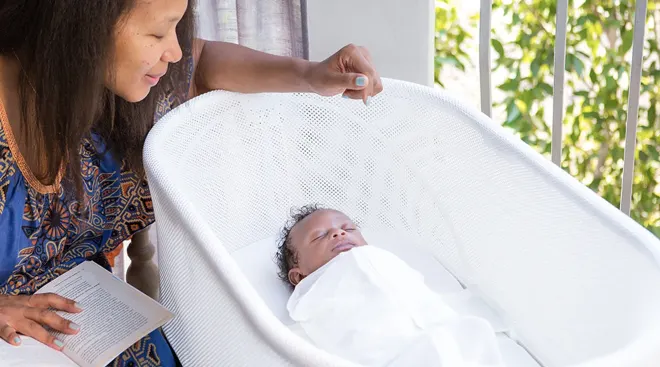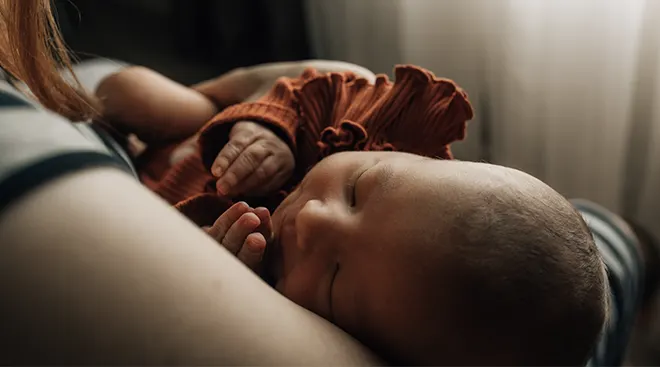When Do Babies Transition to One Nap?
If one thing is consistent with babies, it’s that they’re always changing. By the time your child is one, you may finally feel like you’ve gotten into a comfortable routine—only to have your little one suddenly start fighting the naps they used to so happily take. What gives? It may be time for your tot to drop a nap, whether you’re ready or not. Here, we tapped experts for their top tips on when to transition to one nap and how to do it without having a total crankypants on your hands.
Every child is different, but it’s not unusual for babies to drop to one nap when they’re between 12 and 18 months old. “Usually I see it around 15 to 18 months, but often, children in daycare are transitioned to one nap once they leave an infant room, which is around the 12-month mark,” says Nicole Cannon, a certified child sleep consultant and owner of [Sleepy Mama]((https://www.sleepy-mama.com/), a sleep consulting agency in New Jersey. “As children get older, they naturally need less sleep during a 24-hour period, and that reduction usually comes from daytime sleep.”
If your kiddo is in daycare, they might automatically be shifted to a one-nap schedule. But if they’re at home, should you push them toward one nap? Not necessarily, says Kira Ryan, a baby sleep consultant, co-founder of Dream Team Baby and co-author of The Dream Sleeper: A Three-Part Plan for Getting Your Baby to Love Sleep. “You can look for signs that your child is ready. Fighting a nap or taking a short nap may be a sign that it’s time to consolidate.” Aside from signs your child is ready to make the switch, you might be the one to push for the change for the sake of your schedule. Maybe you want to do a fun class with your kiddo in the morning, or maybe you need them awake to pick up an older sibling. “It can be trial and error,” Ryan says.
The transition to one nap is natural, but that doesn’t mean it’s easy. You may have to rethink your entire day. After all, when your tot is getting only one nap, that nap becomes even more important. With just one nap, you’re really looking for deep, restorative sleep, so it’s not ideal to have an on-the-go nap the way you might have done when your child was an infant, Ryan says. So how do you know when it’s the right time to make the change? Here, signs your toddler may be ready to transition to one nap:
• They fight their nap. “One time is a fluke, but if they continue to fight it day after day, it’s a sign they may not need the two naps anymore,” Ryan says.
• They aren’t going to bed. If a toddler is staying up later than their bedtime, or fighting their bedtime, it’s a sign that something needs to shift in their routine. “I like looking at the 24-hour sleep cycle and seeing what’s working and what isn’t,” says Cannon, adding that a toddler fighting bedtime may be ready for one nap.
• They’re waking up very early. Early wake-ups are another sign your kiddo is ready to make the switch from two naps to one, Cannon says.
• It makes sense for your schedule. Whether your child is going to daycare or you feel two naps have become restrictive in your schedule, it’s okay to experiment and see if switching to one nap a day goes over well. “Kids can get on board, and if one nap for a 15-month-old is what has to happen at school, then they can still keep two naps on the weekends as needed,” notes Cannon.
While you may have flashbacks of a rocky sleep training process, the good news is that transitioning from two naps to one can be a pretty seamless process, especially if your child is already a good sleeper. And if naps are already a struggle? There’s still good news in store: Cannon says the transition to one nap can be a good time to “reset the script” when it comes to sleep hygiene.
So how do you actually go about switching to one nap a day? For the most part, it makes sense to lose the morning nap, Ryan says. But instead of simply dropping it, think of combining your child’s AM and PM naps into one solid nap cycle. To do that, it’s important to move that afternoon nap earlier than usual. “If you used to have a nap from 1 p.m. to 3 p.m., I’d probably suggest changing the start time of that nap to 11:30 a.m. or 12 p.m.,” Ryan says. “If your child used to fall asleep for their morning nap around 10 a.m., delay that nap time by 15-minute increments each day, so they fall asleep at 10:15 a.m. one day, 10:30 a.m. the next, until they reach that 11:30 a.m. mark.” During this transition time—which usually lasts about two weeks—your toddler might take a short afternoon nap, which is fine, especially if they’re taking a long nap in the morning.
Here, some other top tips for making sure that transition to one nap goes smoothly:
• Move up lunch hour. During this transition, you may be wondering when the best time is for your child to eat lunch. That should be a little before she goes down for a nap. As you’re combining naps, you might switch around mealtimes temporarily, but ideally your child will eat around 11 a.m., and then fall asleep shortly thereafter.
• Have an active morning. Play games, go to the park, run around, sing songs—tiring out your toddler is the name of the game in the morning hours while you’re trying to consolidate naps. It’s also important to make sure they don’t snooze on the go. Singing in the car if your child looks drowsy en route home from the grocery store can help them stay awake until nap time.
• Move up bedtime. Your toddler still needs about 14 hours of sleep a day. To make sure they’re getting enough ZZZs, you might need to move bedtime up a bit. “It’s not uncommon for a toddler on two naps a day to fall asleep around 8 p.m. But if you’re moving to one nap, then 7 p.m. may be what you need to shoot for to make sure they have 12 hours of nighttime sleep,” Cannon says. Calculate how much sleep your child is getting when you add up their nap and nighttime sleep and tweak accordingly.
• Let them fuss a little. “A nap cycle is 45 minutes, and we want at least two cycles in the nap,” Ryan says. “There’s some natural shifting as one cycle ends before another cycle begins,” she explains, so you may hear some fussing or crying. But instead of rushing in, let them try to settle themselves, or come in and lightly rub your child’s back without picking them up. That way, they can learn to link sleep cycles and get a solid one and a half to two-hour nap.
• Make the nap count. If your little one had been napping in the stroller or carrier up to this point, it may be time to rethink your routine. “This nap is typically longer and deeper than what you may have experienced in the past,” Ryan says. This means that while an occasional stroller nap may happen, it’s important that the majority of their naps take place in their cribs.
• Be prepared for an off day. Kids aren’t machines, and every child may have a no sleep kind of day every now and then. Rather than assume something’s wrong or start from square one, assess your routine and see where there may be room for tweaking. Maybe your child is overtired, or maybe the nap isn’t as long as it could be. Or it could just be a fluke. A sleep consultant can help you troubleshoot, but know that occasional bad days are par for the course, especially during a nap transition.
• Allow for the occasional two-nap day. On the weekends, when Grandma is visiting or any time your toddler may be rubbing their eyes before the morning is over could be a sign it’s simply a two-nap day. Most kids can easily take two naps without disrupting their usual one nap routine. It might even make sense to continue to keep two naps on the weekends, especially if your toddler seems overtired from daycare. Play it by ear, and if your child is in daycare, consider talking to their teacher to hear about any weekday nap routines you can incorporate into your own home.
Updated July 2019
Plus, more from The Bump:
Navigate forward to interact with the calendar and select a date. Press the question mark key to get the keyboard shortcuts for changing dates.
































